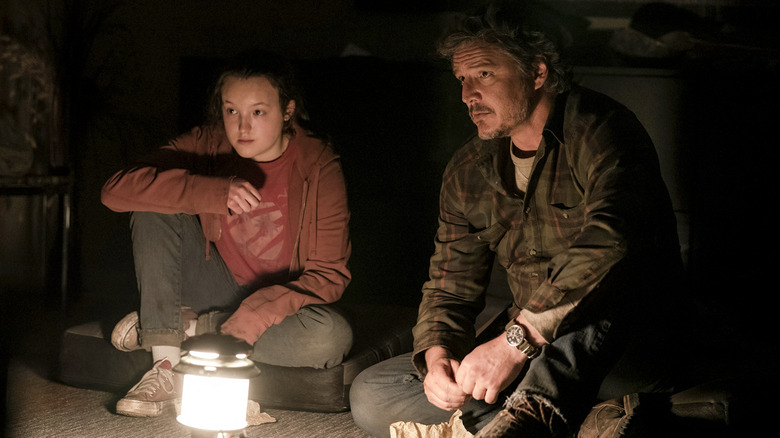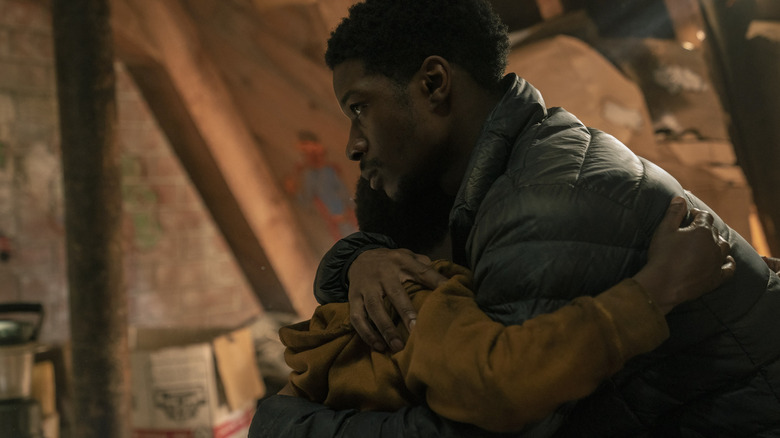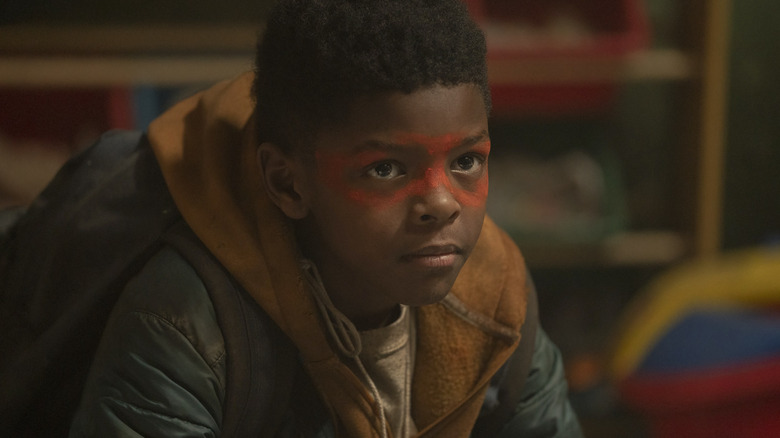Here's Why The Last Of Us Shows Some Deaths And Not Others [Exclusive]
This post contains spoilers for episode 5 of "The Last of Us."
In "The Last of Us," death is everywhere, but we don't always see it. We don't see Bill (Nick Offerman) and Frank (Murray Bartlett) take their last breaths in bed together, and we don't see a shot of Tess (Anna Torv) being burned by an explosion after sacrificing herself to an infected horde. We also didn't see the executions Kansas City's brutal leader Kathleen (Melanie Lynskey) signed off on — or in one case, took into her own hands — during her two-episode arc.
But for the first time in the series' run so far, episode 5 of "The Last of Us" brings a level of carnage fit to match its source material, first bloodying things up with a massive face-off between the infected, Kathleen's group, and Joel's (Pedro Pascal) traveling companions. More importantly, though, the episode pulls zero punches in its final moments, in which we see sweet young Sam (Keivonn Woodard) turn feral. Sam's executed by his brother Henry (Lamar Johnson), who then commits suicide. We don't see Henry's death, but we do see Sam's, as well as Ellie's (Bella Ramsey) stricken face as she takes in the sight of the boy's blood draining across the floor.
'Sometimes the most violent way to show something is to not show it'
In a conversation ahead of the series release, I spoke with episode cinematographer Eben Bolter about the camera's relationship to the deaths in the series, asking why we see some deaths — like this gut punch moment with Sam — but don't see plenty of others. "All along there were conversations about violence," Bolter explained, "and how sometimes the most violent way to show something is to not show it at all and let the audience fill in the gaps, if you like."
While the Naughty Dog game on which the series is based required players to get their hands dirty (and gory), the show has more room for implied violence. Bolter says that in some cases, the team decided that to "see someone's reaction [and let] their face tell you what's happened, and then a trickle of blood — all of those things can be more powerful." The filmmaker gives the bulk of the credit for scenes like Sam's tragic end and the execution of Kathleen's prisoners to series co-creator Craig Mazin and editor Timothy Good, who Bolter calls "outstanding."
"If I'm honest, here I would give all the credit to Craig Mazin and to Tim, our editor," Bolter says. "Because I think what you end up with, with both of the examples you mentioned, is real elegance of restraint in the edit."
Bolter explained that while Sam's death scene had additional coverage, one of the scenes in episode five with brutal implications was always meant to be off-screen. "We always knew that the men were going to go into that room and it was all going to happen offscreen," Bolter said in reference to the collaborator execution scene.
'There's some real elegant editing there'
"That was always planned. But for Sam's death, I'm pretty sure we did shoot a few options."
According to the filmmaker, "Nothing ever got too gory, but you never quite know what you're going to need, so we did kind of cover it more than you see in the final edit." Bolter goes back to the word "elegant" in reference to Good's editing, saying, "all along it was the intention to show it the way it's been shown, but I do think there's some real elegant editing there."
It's a testament to the Mazin and co-creator Neil Druckmann's vision, as well as to Bolter, Good, and episode director Jeremy Webb, that the final product communicates unspeakable violence with both the visual restraint Bolter mentions and a still-shattering rawness. In HBO's version of "The Last of Us," we never get blood splattering across the screen the way we did in the original game, but we still get the feeling of pure heartbreak that comes with the deaths we don't see — and the ones we do.


